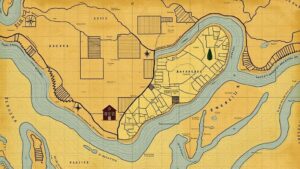First-Person Diaries of Arctic Explorers: Tracking Clues to Fossilized Relics
First-Person Diaries of Arctic Explorers: Tracking Clues to Fossilized Relics
The exploration of the Arctic has fascinated historians, environmentalists, and scientists alike. First-person diaries from Arctic explorers provide a unique lens through which we can view the challenges, observations, and discoveries made in one of the most inhospitable regions on Earth. These accounts not only chronicle human endeavors but also reveal valuable clues regarding the existence and preservation of fossilized relics.
The Historical Context of Arctic Exploration
Arctic exploration gained momentum in the late 19th and early 20th centuries, driven by scientific curiosity and nationalistic fervor. Notable figures such as Sir John Franklin (1845), Robert Peary (1909), and Roald Amundsen (1896-1897) embarked on perilous journeys that would significantly contribute to our understanding of the Arctic. Franklins ill-fated expedition aimed to traverse the Northwest Passage, a goal that eluded explorers for centuries.
Diaries from these expeditions serve as first-hand accounts reflecting the explorers observations about the environment, climate, and geology of the Arctic regions they traversed. The nuances in their writings hold critical information regarding climatic conditions of their time, which can serve as comparative data for current climate studies.
Notable First-Person Accounts
- Robert Peary’s Diary (1909): Pearys meticulous notes provide insights into the Antarctic ice conditions and geographical features, revealing the shifting dynamics of ice flows which are essential for studying modern glaciology.
- Fridtjof Nansen’s “Farthest North†(1897): Nansens expedition included detailed observations on ice formations and sedimentary structures that aided in the understanding of fossil deposits.
These accounts are not merely historical artifacts; they contain data that can lead researchers to potential fossilized relics buried beneath layers of ice. descriptions of geological formations and sediment types can guide paleontologists in their search for ancient life forms preserved in these unique environments.
Fossilization Processes in Arctic Environments
Fossilization is an intricate process that typically requires specific environmental conditions. The Arctics cold, dry climate can preserve organic materials far longer than temperate regions. Key factors include:
- Low decomposition rates: The frigid temperatures slow down microbial activity, reducing decay.
- Layering of sediments: Ice can trap organisms and sediments, protecting them from erosion.
- Unique preservation conditions: Permafrost can encase ancient remains, providing a snapshot of former ecosystems.
For example, the discovery of well-preserved woolly mammoth remains in Siberian permafrost has illuminated insights into the Pleistocene epoch, demonstrating how specific climatic conditions facilitate fossilization.
Implications for Modern Research
Current research often relies on these historical diaries to reconstruct past environments, offering a baseline for understanding climate change. paleoclimate data inferred from these expeditions aids in future climate models. For example, Peary’s observations of glacial formations have been compared with satellite data today to study glacial retreat.
Also, diary entries can highlight the migratory patterns of species that once inhabited the Arctic, indicating ecological shifts over thousands of years. The analysis of this data can lead to significant findings regarding species adaptation in response to changing climates.
Conclusion and Future Directions
First-person diaries from Arctic explorers are not just chronicles of adventure but are essential documents that can guide modern scientific inquiry. r observations serve as both a historical record and a resource for understanding fossilization processes in extreme environments. As researchers sift through these valuable records, they continue to unlock the mysteries of our planets climatic history, with implications for biodiversity conservation and climate adaptation strategies.
Future research should aim to integrate multidisciplinary approaches, utilizing advancements in technology to analyze historical data alongside modern findings. By doing so, scientists can develop a more comprehensive understanding of the Arctics past, present, and future, ultimately contributing to broader ecological and geological narratives.



